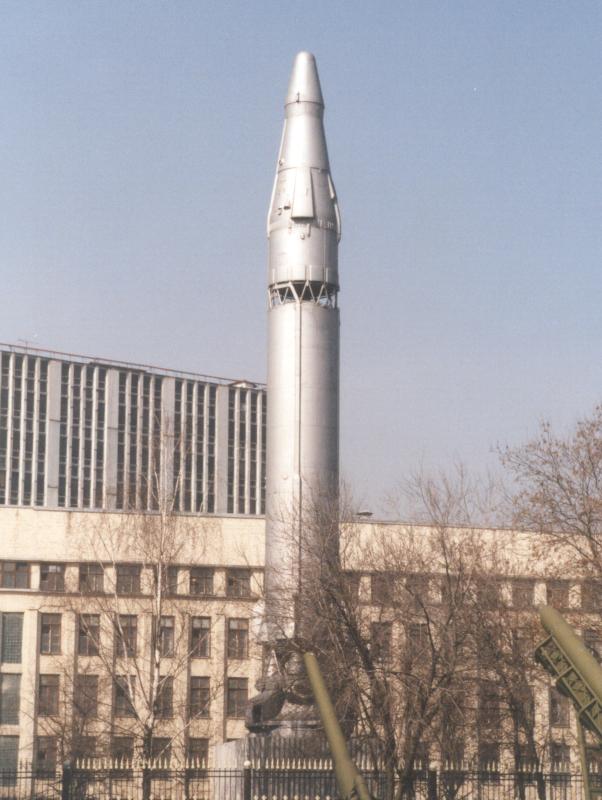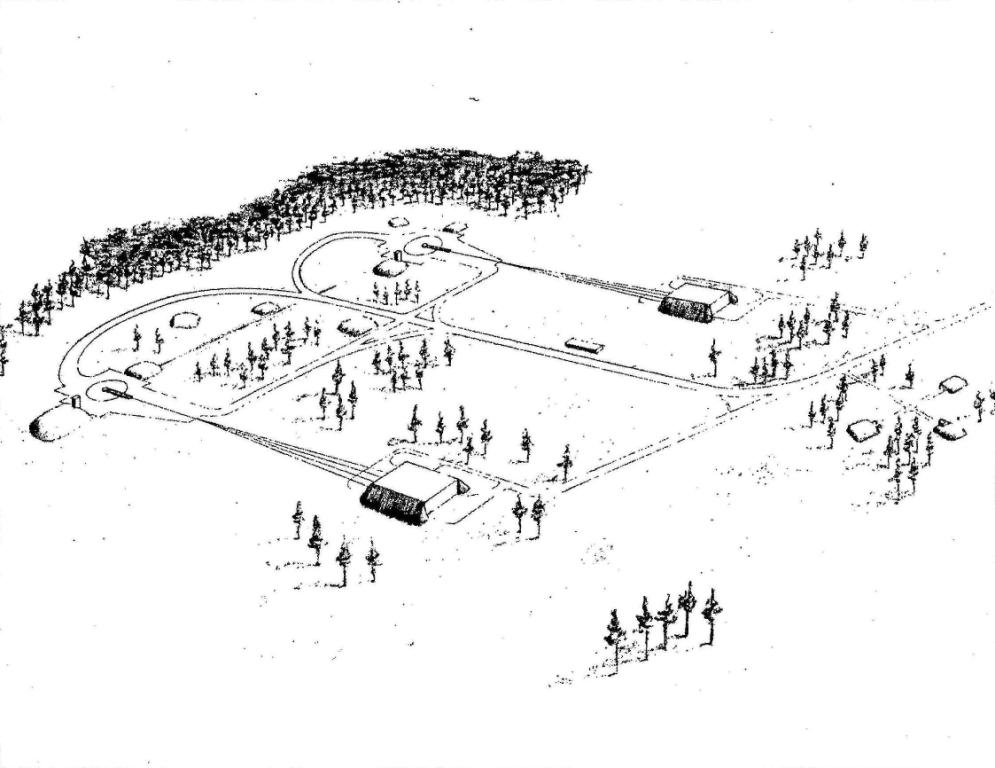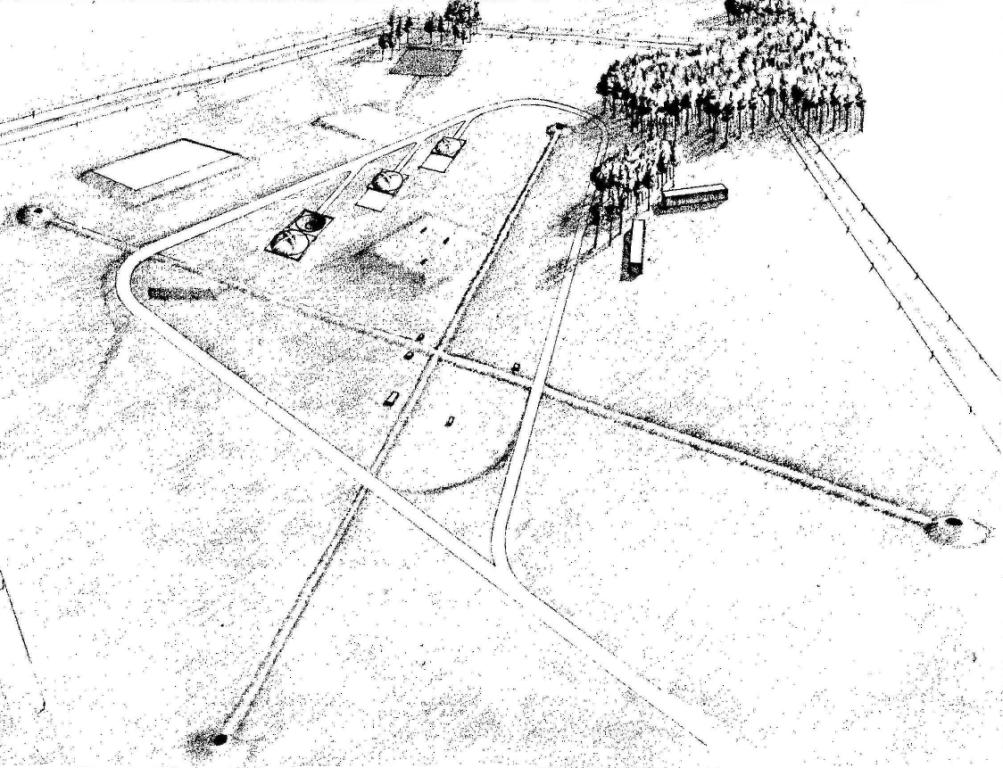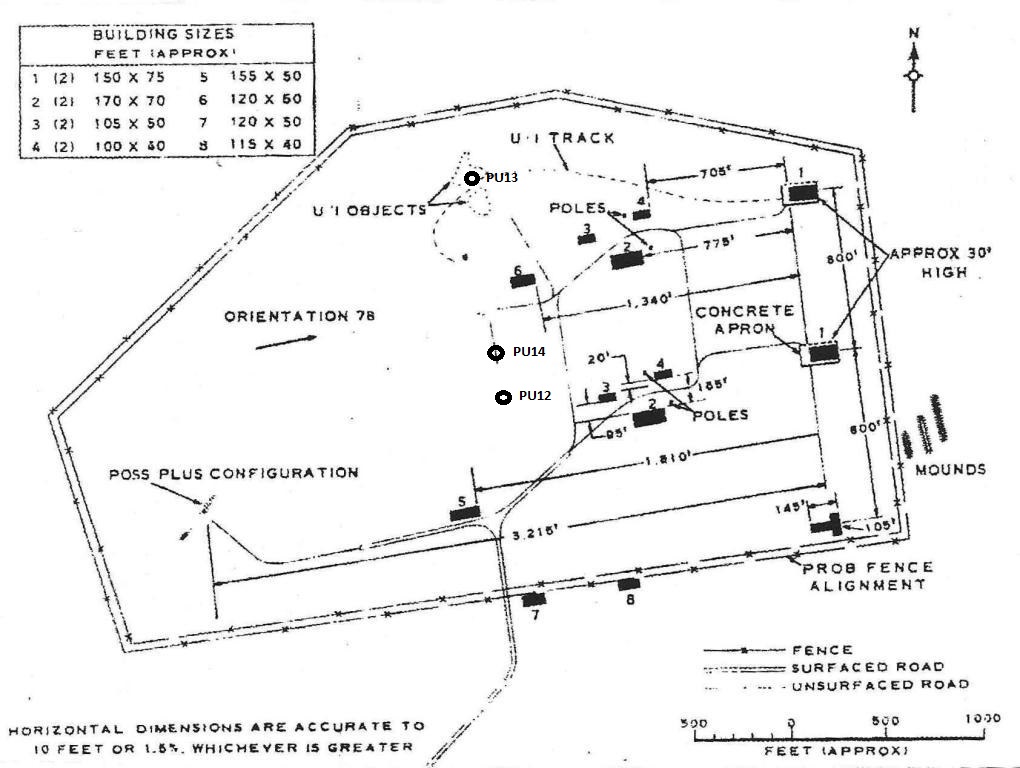
R-9A (SS-8 Sasin)

The R-9A was a 2-stage intercontinental ballistic missile with tandem stage separation, none-storable liquid fuel (could remain fuelled for only 24 hours) and a single warhead. Designed by the Korolev bureau (OKB-1). Development was authorised 17.12.56. The silo version was authorised 30.5.60.
The R-9A was built at the State Aviation Plant No. 1 in Kuybyshev, Kuybyshev Oblast [53 13 17N, 50 18 12E] - over 100 missiles were delivered 1961 to 1966.
MAZ vehicles and associated trailers were built at the Minsk Automobile Plant (53 51 29N, 27 39 23E) and the Kurgan Wheeled Tractor Plant (55 25 41N, 65 17 28E).
Two warheads was available - a light warhead (yield 3 MT, weight 1100 kg) and a heavy warhead (yield 5 MT, weight 1650 to 2100 kg).
CEP was 1600 meters, with a max deviation of 5 km. The R-9A was more accurate that the R-16, and this was achieved by using a radio-altimeter correction system during the last 10 seconds before warhead detonaton.
The R-9A was never shown in the Moscow military parades, so the SS-8 Sasin designation was initially applied to the R-26 missile, which was shown in the military parades - even today, pictures of the R-26 are often shown when the R-9A missile is described.
Launch complexes:
8P864 (Desna-N) - 2 launch pads, an underground command post, fuel storage and two MIK (assembly, test and missile storage) buildings.

The Desna-N complex was known to the US as a Type IIC site. The R-9A missile was transported from the MIK building to the pad using rails. The installer trolley (designation unknown), which would raise the missile on the pad, can be seen here and here. The pad ("launch table)" was designated 8U245. The missile was fuelled by three underground stationary refuelling equipment stations: oxidizer (8G136), fuel (8G160) and compressed air (8G137). Each MIK building could hold up to 4 R-9A missiles and 4 installer trolleys.
Pre-launch duration for the R-9A was about 2 hrs, and it could be launched 21 minutes after being raised on the pad - this was later reduced to 5 minutes.
8P775 (Desna-V) silo complex with the 8U233 silo and the 8U12 silo cover - with three 8U233 silos about 25m apart.

The US designated the 8P775 as Type IIIB silo sites - The missile was installed in the silo by the 8U236 (image 2) transporter/installer trailer, and after installation the warhead section would be placed on top of the missile with the help of a 8T210 crane. The missile was fuelled by two underground stationary refuelling equipment stations: oxidizer (8G143) and fuel (8G146). After fuelling, the missile could be launched after 15 minutes.
8P??? (Dolina) - 2 launch pads, an underground command post, fuel and oxidant storage and a single MIK building (missile storage).

Dolina was authorised in May 1962. The drawing above is an overview of site 71 at the Baikonur Test Center, which is the only Dolina installation constructed. The Site also contains a regular R-9A pad (PU13) with an associated MIK building. The Dolina complex consists of 2 launch pads ("trigger") 8U245M (PU14 and PU-12 on the drawing), and was associated with two fully automated missile installers (8U249) which would transfer the missiles from the MIK to the pad, and then automatically raise the missiles on the pad. Fuelling would be done automatically by the three underground stationary refuelling equipment stations: oxidizer (8G717), fuel (8G716) and compressed air (8G719). The first missile could be launched after 2.5 hours, with the second missile 9 minutes thereafter. Missiles that had been raised on the pad and fuelled, could be launched after 20 minutes.
Organisational history:
In May, June and July 1960 - 16 Missile Brigades were activated to control the R-16 and R-9A ICBM's - each would have four missile regiments (except for the 216th Guards Missile Brigade with 3 regiments), and each regiment would control up to 3 battalions, with a potential of no less than 189 R-16 and R-9A twin pad sites in total:
Each R-16/R-9A launch site would receive their own number preceded by the letters BSP, which means Military Launch Position - for example, the six launch positions in Drovyannaya were designated BSP-11, BSP-12, BSP-13, BSP-21, BSP-23 and BSP-31. The plans was to have used the designations BSP-1 to BSP-3 for the first regiment, BSP-11 to BSP-13 for the second regiment, and so on.
The silo versions of the R-9A and R-16 were approved 30.5.60, and the brigades was now planned to have a mix of pads and silos.
30.5.61 all brigades were elevated to divisions - by this time, it was now clear that the R-9A and R-16 had clear limitations, and deployment plans were severly curtailed, escpecially for the R-9A missile.
30.3.64 all missile battalions were elevated to regiments, and 58 new regiments were activated.
In 1968 many regiments were again reduced to battalions, in order to release regimental HQ's for the new missiles (R-36 and UR-100).
Chronological deployment history:
Note: the numbers within the brackets, are the missile regiments of which the BSP site was subordinated (initially - from april 1964 - from 1968).
1964:
14.12.64 - BSP-32 (329-329 missile regiment) in Plesetsk, Arkhangelsk Oblast (53rd Scientific Research Proving Ground) went on alert duty with 2 R-9A pads.
14.12.64 - BSP-12 (623-623-289 missile regiment) in Kozelsk, Kaluga Oblast (28th Guards Missile Division) went on alert duty with 2 R-9A pads.
15.12.64 - BSP-31 (329-63 missile regiment) in Plesetsk, Arkhangelsk Oblast (53rd Scientific Research Proving Ground) went on alert duty with 2 R-9A pads.
23.12.64 - BSP-31 (656-656-656 missile regiment) in Kozelsk, Kaluga Oblast (28th Guards Missile Division) went on alert duty with 3 R-9A silos.
26.12.64 - BSP-21 (655-655-656 missile regiment) in Kozelsk, Kaluga Oblast (28th Guards Missile Division) went on alert duty with 2 R-9A pads.
By the end of 1964 there were 11 R-9A missiles (8 launch pads and 3 silos) operational.
1965:
00.00.65 - BSP-11 (623-119-289 missile regiment) in Kozelsk, Kaluga Oblast (28th Guards Missile Division) went on alert duty with 2 R-9A pads.
00.00.65 - BSP-22 (655-289-289 missile regiment) in Kozelsk, Kaluga Oblast (28th Guards Missile Division) went on alert duty with 3 R-9A silos.
00.00.65 - BSP-12 (390-390-390 missile regiment) in Tyumen, Tyumen Oblast (10th Missile Brigade) went on alert duty with 2 R-9A pads.
00.00.65 - BSP-13 (390-39-39 missile regiment) in Tyumen, Tyumen Oblast (10th Missile Brigade) went on alert duty with 2 R-9A pads.
00.00.65 - BSP-11 (290-290-290 missile regiment) in Omsk, Omsk Oblast (290th independent Missile Regiment) went on alert duty with 3 R-9A silos.
By the end of 1965 there were 23 R-9A missiles (14 launch pads and 9 silos) operational - not counting the pads and silos at the Baikonut Test Center.
1966:
By the end of 1966 there were 23 R-9A missiles (14 launch pads and 9 silos) operational.
1967:
By the end of 1967 there were 23 R-9A missiles (14 launch pads and 9 silos) operational.
1968:
By the end of 1968 there were 23 R-9A missiles (14 launch pads and 9 silos) operational.
1969:
00.00.69 - BSP-32 (329th Missile Regiment) in Plesetsk, Arkhangelsk Oblast (53rd Scientific Research Proving Ground) went off alert duty with 2 R-9A pads.
By the end of 1969 there were 21 R-9A missiles (12 launch pads and 9 silos) operational.
1970:
By the end of 1970 there were 21 R-9A missiles (12 launch pads and 9 silos) operational.
1971:
By the end of 1971 there were 21 R-9A missiles (12 launch pads and 9 silos) operational.
1972:
By the end of 1972 there were 21 R-9A missiles (12 launch pads and 9 silos) operational.
1973:
By the end of 1973 there were 21 R-9A missiles (12 launch pads and 9 silos) operational.
1974:
By the end of 1975 there were 21 R-9A missiles (12 launch pads and 9 silos) operational.
1975:
00.00.75 - BSP-31 (63rd Missile Regiment) in Plesetsk, Arkhangelsk Oblast (53rd Scientific Research Proving Ground) went off alert duty with 2 R-9A pads.
By the end of 1975 there were 19 R-9A missiles (10 launch pads and 9 silos) operational.
1976:
00.00.76 - all pad and silo sites went off alert duty.
By the end of 1976 there were 0 R-9A missiles (0 launch pads and 0 silos) operational.